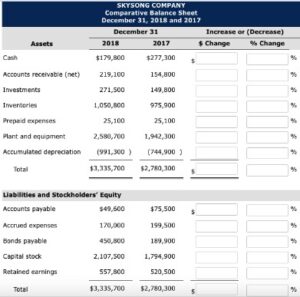6 Best Accounts Receivable Software for Small Businesses
13 Best Accounts Receivable and Accounts Payable Software
12/01/2021Virtual Bookkeeping Business: Start & Grow
14/01/2021
In summary, monitoring KPIs such as Accounts Receivable Turnover and Days Sales Outstanding (DSO) plays a vital role in evaluating the efficiency of a company’s accounts receivable processes. By tracking these metrics, businesses can identify areas for improvement and maintain a healthy cash flow. When it comes to managing accounts receivable, it is important to remember that this process is not just about collecting payments from customers. It is also about maintaining a good relationship with your clients, ensuring that they always have trust in your company. In this article, we will discuss how to improve your accounts receivables management and reduce the risk of generating bad debt. Keeping timely, accurate transaction and payment records is central to accounts receivable management, too.

Poor communication between your AR team and customers
Put them in writing and make them easily available to team members and customers. Efficiently managing accounts receivable is a cornerstone of financial stability for any business. However, in today’s fast-paced business landscape, marked by rapid transactions and evolving market dynamics, accounts receivable management presents its challenges. Keeping track of exactly who’s behind on which payments can get tricky if you have many different customers.
AR automation
Inadequate streamlining of the accounts receivable processes can lead to disruptions and gaps within the AR workflow, hindering the smooth continuity of operations. Jane wants to buy a $5,000 hot tub but doesn’t have the money at the time of the sale. The hot tub company would invoice her and allow her 30 days to pay off her debt. During that time, the company would record $5,000 in their accounts receivable. When Jane pays it off, the money would go back to the sales amounts or cash flow.
Balance Sheet Presentation
In this equation, accounts receivable is considered an asset as it indicates the expected cash inflows a company is due to receive. As customer payments are received, accounts receivable decreases, while the cash received increases the company’s cash balance. With this in mind, making use of accounting software can help you to automate a huge number of your accounting processes. By digitising your invoicing, you can take a huge amount of human error out of your invoicing processes. This in turn means you can be far more efficient when it comes to collecting your payments.
Offer a financial incentive
It can also be calculated using the Accounts Receivable Turnover Ratio, which is net credit sales divided by the average accounts receivable balance during the period. This ratio helps measure the efficiency of the company’s credit and collections practices. The AR process workflow includes invoice generation, sending invoices to customers, tracking payments, applying cash receipts, managing collections, and reconciling accounts. Each step ensures timely billing and payment, effective credit management, and proactive follow-up on overdue accounts. Accounts receivable (AR) is a current asset on the balance sheet of a company.
- This comprehensive approach ensures a smooth and efficient management of accounts receivable throughout the entire customer lifecycle.
- The downside to setting credit limits is that you may lose some business in the short term from clients who can no longer afford your services.
- A good accounting system with tools for managing invoice accounts receivable can help you get paid faster, so you can focus on running your business.
Simply getting on the phone with a client and reminding them about unpaid invoices can often be enough to get them to pay. Sending email reminders at regular intervals—say, after 15, 30, 45, and 60 days—can also help jog your customers’ memory. Providing various payment choices, like credit/debit cards or ACH drafts, enhances customer convenience. Online billing streamlines accounts receivable, accelerates invoice delivery, and enhances record-keeping. Collecting receivables promptly is vital for every business because the pace at which you can collect receivables from customers directly influences your cash flow.
And while not a traditional metric, customer satisfaction is important in assessing the effectiveness of AR management. Note that regular reconciliation of payments with outstanding invoices can help identify any discrepancies or overdue accounts. By being mindful of both legal and ethical considerations, what really happens if you dont pay your taxes by april 15 companies can foster an accounts receivable management process that is compliant with regulations and emphasizes fairness for all parties involved. DSO can vary significantly across industries and businesses, so it’s essential to consider context when interpreting this metric.

A specific area that stands to gain significant benefits from automation is accounts receivable. By implementing automation in this area, businesses can experience a notable increase in efficiency, as well as a reduction in manual errors. The disparity between the goals of the sales and finance departments can lead to conflicts. While the sales team aims to increase sales, the finance team focuses on reducing bad debt. This misalignment becomes evident when the sales team promises credit terms to customers that the finance department may not approve of.

It’s important to be proactive about accounts receivable management, and reach out to clients early on if there are any signs that they may not be able to pay their bill on time. This will give you more options for collections, such as repayment plans or debt recovery services. Companies can’t fix what they can’t measure, which is why companies must evaluate their AR performance to accurately assess their accounts receivable management performance. The most prominent AR metrics are day sales outstanding (DSO), collection effectiveness index (CEI), accounts receivable turnover rate, and average days delinquent (ADD). Accounts receivable management is the process of monitoring and controlling money customers owe to a business for goods or services purchased on credit.
To calculate CEI, add your beginning receivables and monthly credit sales, then subtract ending total receivables. Then divide that by the sum of beginning receivables and monthly credit sales, minus ending current receivables. Explore the best countries for outsourcing business operations in 2024, highlighting top destinations that offer cost-effective and high-quality services. To record this transaction, you’d first debit “accounts receivable—Keith’s Furniture Inc.” by $500 again to get the receivable back on your books, and then credit revenue by $500. Remember that the allowance for uncollectible accounts is just an estimate of how much you won’t collect from your customers.
Additionally, take advantage of their interactive debtor reports to gain more insight into your customers’ payment behaviors for better planning. This product is virtually risk-free because CollBox only takes a percentage of the successfully collected invoices and requires no upfront fee. In other words, you only pay if they’re successful in collecting the invoices you were likely ready to write off.
Meanwhile, companies that are digitizing and automating accounts receivable management tasks are leaving competitors in the dust as they leverage automation to boost cash flow and enable future growth. This efficient management keeps the company’s cash flow consistent and fosters stronger relationships with clients. The company’s reliability and professionalism contribute to customer loyalty and referrals.
Doing so ensures account balances are up-to-date and makes account reconciliation smoother. An effective accounts receivable management system also strengthens your business’s reputation and builds strong relationships with customers by ensuring their payment experiences are memorable and easy. When you have a system to manage your working capital, you can stay ahead of issues like these. Calculating your business’s accounts receivable turnover ratio is one of the best ways to keep track of late payments and make sure they aren’t getting out of hand.
When Keith gets your invoice, he’ll record it as an accounts payable in his general ledger, because it’s money he has to pay someone else. In B2B transactions, particularly those involving deferred payments, maintaining high-quality standards is essential. Quality should encompass not only the products or services you provide but also the quality of customer interactions at every stage of engagement. By offering a range of payment options, you enhance convenience for your customers, eliminating the need for them to disrupt their daily routines to fulfill payment obligations. When it comes to facilitating payments, providing multiple options is paramount. This approach ensures that customers can make payments even when their authorized personnel are unavailable due to travel or other commitments.
According to the AR Pulse Check Survey of 2022, the data indicates that 52% of the respondents strongly believe in digitizing Accounts Receivable as a critical factor for attaining peak performance. Organizing your expenses into specific budget categories helps you prepare for a smooth tax filing season and make more informed business decisions. We’ll take you step-by-step through the Bench income statement and how it describes the current financial state of your company. In this case, you’d debit “allowance for uncollectible accounts” for $500 to decrease it by $500. If you can’t contact your customer and are convinced you’ve done everything you can to collect, you can hire someone else to do it for you. Additionally, you can streamline the invoicing process with meticulous attention to detail.
A lower ADD means customers remit faster and is a sign of effective AR management practices. ADD is most valuable when evaluated as a trend over time and in comparison with other metrics, like DSO. Poor communication can manifest in several ways, such as sending invoices that lack proper documentation or go to the wrong contact. To AR teams, it can look like a check that was “lost in the mail,” unexplained short payments, or payments sent with incomplete remittance information. Here is the list of top 10 best practices for accounts receivable management.
Develop a standard invoicing process with templates and numbering conventions for consistent, accurate billing. This creates more account management work for AR teams and a negative customer experience. Finally, to record the cash payment, you’d debit your “cash” account by $500, and credit “accounts receivable—Keith’s Furniture Inc.” by $500 again to close it out once and for all.
Accounts receivable management (ARM) refers to a range of activities that businesses use to ensure they receive payments for the products and services they provide on time. Not only do delinquent clients make it hard to predict cash flow, but chasing payments can take away a lot of time that business owners can otherwise use what is warehouse slotting more productively. One product starts at $250 per month and helps with recently past-due invoices. A team of accounts receivable experts helps you collect your recently past-due payments and you get to keep all of the profit. Clear communication is critical to an optimized collections process and good customer experience.
The sooner you start chasing payments, the more likely you are to receive them in full and on time. It’s important to note that these benefits can be achieved by any business, regardless of size or industry, and we’ll be giving you some easy-to-implement tips on how to manage your accounts receivable. Try one or more solutions what is a good return on investment on this list and experience the power of accounts receivable for yourself. No company wants to deal with overdue invoices, but it’s often an inevitable part of doing business. It is best practice for a business to be discrete about which customers they will extend credit terms to when drafting a credit policy.
